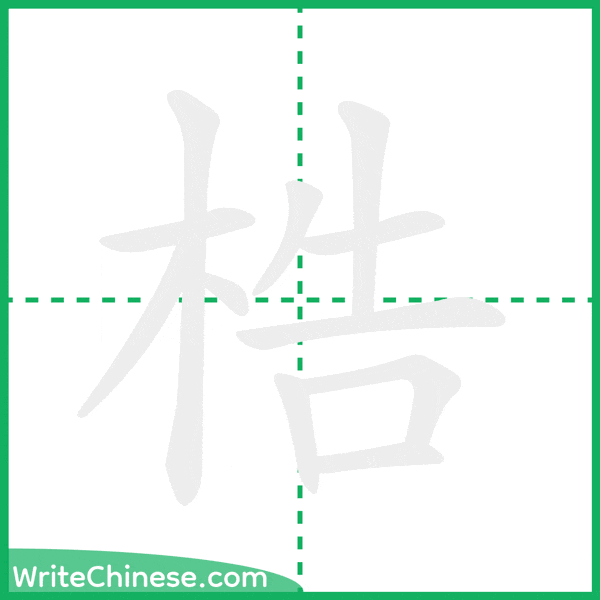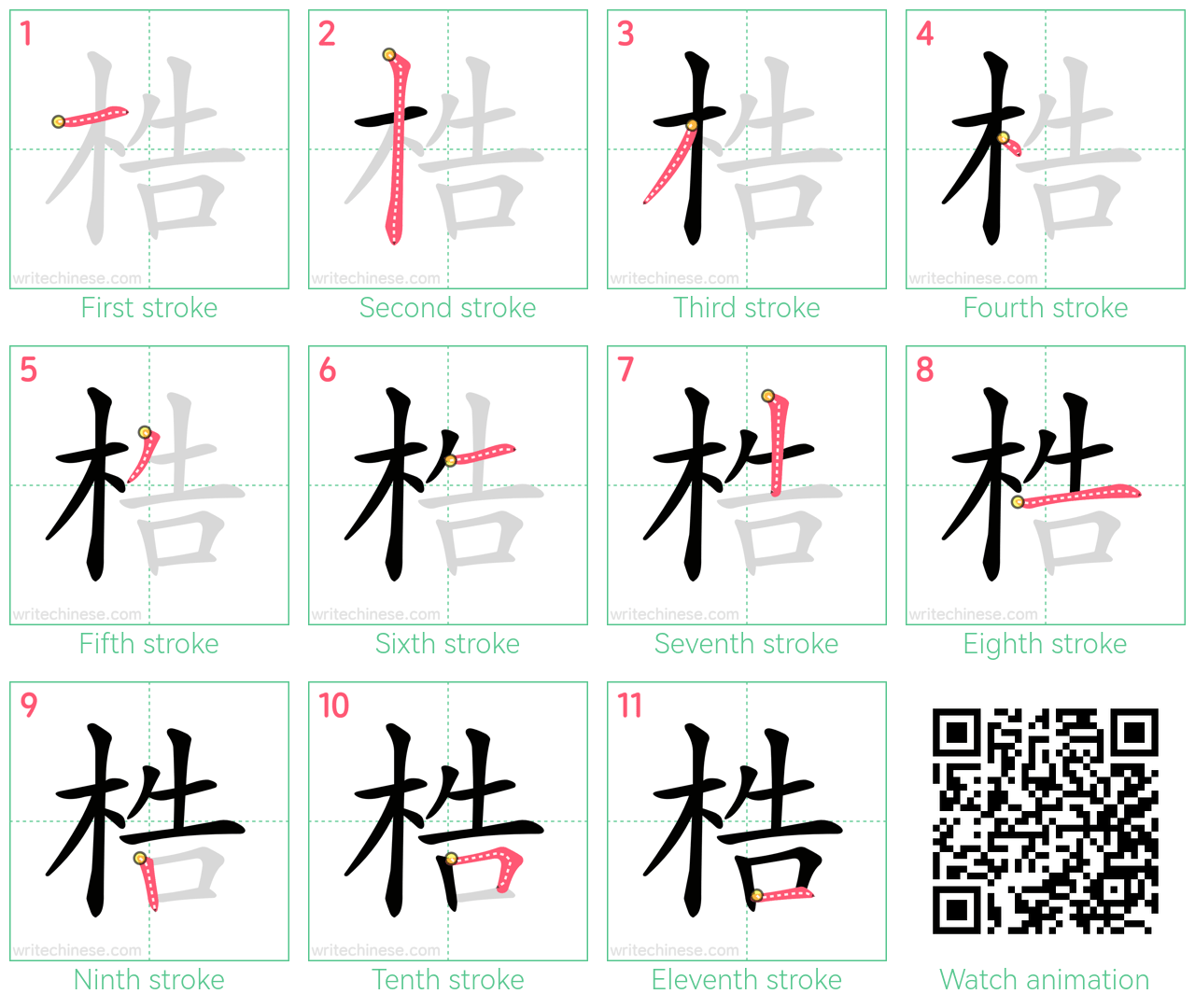How to write 梏
Animated Stroke Order of 梏
Learn to write the Chinese character "梏" by watching the stroke order animation of "梏".

Stroke by Stroke: 梏 Writing Order
Master the Chinese character '梏' stroke by stroke with visual step-by-step instructions.

Follow the Calligraphy Master: Writing '梏' Step-by-Step
Learn the proper way to write the Chinese character '梏' through a video tutorial with a calligraphy teacher. Follow the Calligraphy Master's Step-by-Step Guide to Write the Chinese Character '梏'. You can download the printable handwriting worksheets below and practice writing together with pen and paper.
Free Printable 梏 Handwriting Practice Worksheets
Meaning of 梏
Same Pronunciation Characters
Same Radical Characters
- 木
- 未
- 末
- 本
- 术
- 朱
- 朴
- 朵
- 机
- 朽
- 杀
- 杂
- 杆
- 杉
- 李
- 杏
- 材
- 村
- 杖
- 杜
- 束
- 杠
- 条
- 杨
- 杭
- 杯
- 杰
- 松
- 板
- 极
- 构
- 枉
- 析
- 枕
- 林
- 枚
- 果
- 枝
- 枢
- 枣
- 枪
- 枫
- 枯
- 架
- 柄
- 柏
- 某
- 柑
- 柒
- 染
- 柔
- 柜
- 柠
- 查
- 柬
- 柱
- 柳
- 柴
- 柿
- 栅
- 标
- 栈
- 栋
- 栏
- 树
- 栓
- 栖
- 栗
- 校
- 株
- 核
- 根
- 格
- 栽
- 桂
- 桃
- 框
- 案
- 桌
- 桐
- 桔
- 桥
- 桦
- 桨
- 桩
- 桶
- 梁
- 梆
- 梗
- 梢
- 梦
- 梧
- 梨
- 梭
- 梯
- 械
- 梳
- 检
- 棉
- 棋
- 棍
- 棒
- 棕
- 棘
- 棚
- 棠
- 森
- 棱
- 棵
- 棺
- 椅
- 植
- 椎
- 椒
- 椭
- 椰
- 椿
- 楚
- 楷
- 楼
- 概
- 榄
- 榆
- 榔
- 榕
- 榜
- 榨
- 榴
- 槐
- 槛
- 槽
- 樟
- 模
- 横
- 樱
- 橄
- 橘
- 橙
- 橡
- 橱
- 檀
- 檐
- 檬
- 札
- 杈
- 杌
- 杓
- 杞
- 杪
- 杲
- 杳
- 杵
- 杼
- 枇
- 枋
- 枞
- 枥
- 枧
- 枨
- 枭
- 枰
- 枳
- 枵
- 枷
- 枸
- 柁
- 柘
- 柙
- 柚
- 柝
- 柞
- 柢
- 柩
- 柯
- 柰
- 柽
- 栀
- 栉
- 栊
- 栌
- 栎
- 栝
- 栩
- 栲
- 栳
- 栾
- 桀
- 桁
- 桅
- 桉
- 桎
- 桓
- 桕
- 桡
- 桢
- 桤
- 桧
- 桫
- 桴
- 桷
- 梃
- 梏
- 梓
- 梵
- 梿
- 棂
- 棣
- 棰
- 棹
- 棻
- 棼
- 椁
- 椋
- 椐
- 椟
- 椠
- 椤
- 椪
- 椴
- 椽
- 楂
- 楔
- 楝
- 楠
- 楣
- 楦
- 楫
- 楮
- 楸
- 楹
- 榈
- 榉
- 榛
- 榧
- 榫
- 榭
- 榱
- 榷
- 榻
- 槁
- 槊
- 槌
- 槎
- 槔
- 槟
- 槠
- 槭
- 槲
- 槿
- 樊
- 樗
- 樘
- 樨
- 樯
- 樵
- 樽
- 樾
- 橇
- 橐
- 橛
- 橹
- 橼
- 檄
- 檎
- 檗
- 檠
- 檩
- 朮
- 朿
- 杩
- 東
- 枒
- 枓
- 枘
- 枼
- 柃
- 柊
- 柵
- 栱
- 栴
- 桄
- 桊
- 桠
- 桲
- 桼
- 桿
- 梔
- 條
- 梟
- 梣
- 梼
- 梾
- 棄
- 棗
- 棟
- 棥
- 棧
- 棲
- 棶
- 椆


